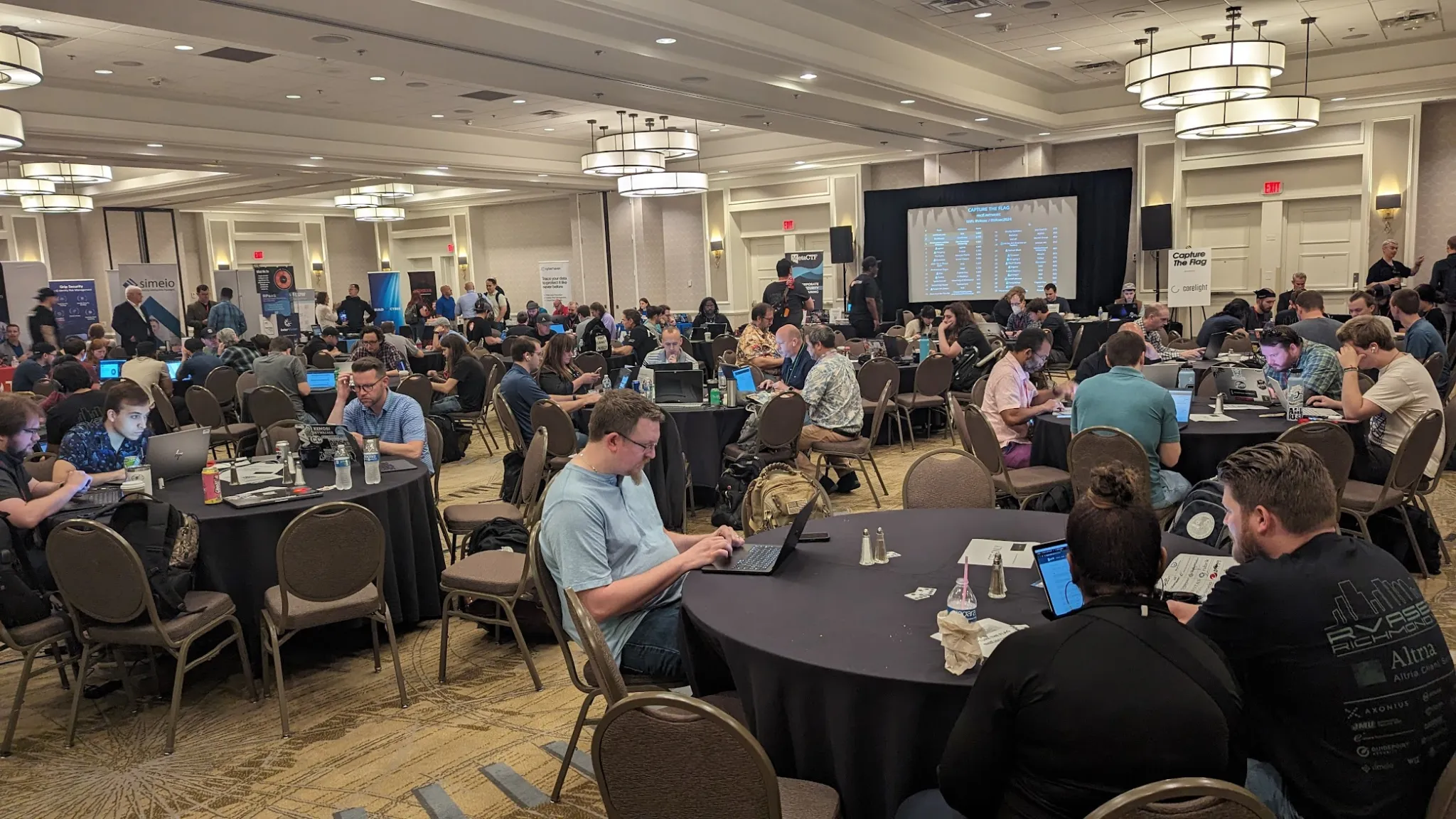Security Awareness & Culture: Defense-Grade Training for Every Organization
In the rapidly evolving cybersecurity landscape of 2025, human error continues to be the leading cause of security breaches. With the majority of breaches still traceable to human factors, building a robust security culture has never been more critical for organizations across defense, healthcare, manufacturing, and government sectors. At Dragnet, we believe that defense-grade cybersecurity extends beyond technology; it requires transforming your workforce into your strongest line of defense through strategic security awareness and culture development.
Building a Security Culture That Actually Works
Creating an effective security culture requires more than annual training sessions and policy distribution. It demands a fundamental shift in how your organization approaches cybersecurity at every level, from the C-suite to front-line employees. True security culture transformation integrates seamlessly with existing business processes while establishing security as a core organizational value.
The Foundation: Leadership-Driven Security Culture
Security culture transformation begins with leadership commitment that extends beyond budget allocation to active participation and modeling. When executives demonstrate genuine security awareness in their daily operations, employees naturally follow suit. This means leadership must visibly engage with security protocols, participate in training programs, and make security considerations part of strategic decision-making processes.
Effective leadership in security culture development includes:
Active participation in security initiatives where leaders complete the same training modules as their teams, demonstrating that security is everyone's responsibility regardless of organizational level.
Integration of security metrics into business KPIs ensuring that security performance receives the same attention as other critical business metrics during board meetings and strategic planning sessions.
Recognition and reward systems that celebrate employees who demonstrate exceptional security awareness, report potential threats, or contribute to security improvements through formal acknowledgment programs.
Transparent communication about security challenges where leaders openly discuss security incidents as learning opportunities rather than disciplinary matters, fostering an environment of continuous improvement and honest reporting.
Establishing Security as a Business Enabler
Modern security culture recognizes that cybersecurity serves as a business enabler rather than a constraint. Organizations that successfully build security cultures frame security measures as tools that enable business growth, competitive advantage, and customer trust rather than obstacles to productivity.
This approach involves:
- Connecting security practices to business outcomes by demonstrating how strong security posture enables contract wins, regulatory compliance, and customer confidence
- Embedding security considerations into business processes rather than treating them as separate activities that interrupt normal operations
- Providing role-specific security guidance that helps employees understand how security supports their individual job functions and career success
- Creating feedback loops that allow employees to suggest security improvements based on their operational experience and business needs
Measuring Cultural Transformation
Effective security culture requires measurable outcomes that demonstrate progress and identify areas for continued improvement. Organizations must establish baseline measurements and track cultural indicators that extend beyond traditional compliance metrics.
Key cultural indicators include:
- Proactive threat reporting rates measuring how frequently employees voluntarily report suspicious activities or potential security concerns
- Security-related collaboration levels tracking cross-departmental security initiatives and employee participation in security improvement projects
- Policy adherence in unmonitored situations assessing how well employees follow security protocols when not subject to direct oversight
- Employee security confidence scores measuring how comfortable employees feel identifying and responding to security threats in their work environment
Security Training That Employees Won't Hate
Traditional security awareness training often fails because it treats employees as passive recipients of information rather than active participants in organizational defense. Effective security training recognizes that employees want to contribute to organizational security but need engaging, relevant, and practical education that respects their time and intelligence.
Moving Beyond Compliance Theater
Many organizations approach security training as a compliance checkbox rather than a genuine educational opportunity. This mindset creates training programs that prioritize completion rates over comprehension and behavioral change. Effective security training shifts focus from compliance documentation to genuine skill development and behavioral transformation.
Modern security training that employees embrace incorporates:
Realistic, role-specific scenarios that address the actual security challenges employees face in their daily work, rather than generic threats that feel irrelevant to their responsibilities.
Interactive learning experiences that require active participation and decision-making, helping employees develop confidence in their security judgment through practice and repetition.
Just-in-time learning opportunities that provide security guidance when employees need it most, such as during software updates, new system implementations, or process changes.
Peer-to-peer learning programs where employees share security insights and experiences with colleagues, creating organic knowledge transfer and cultural reinforcement.
Designing Training for Adult Learners
Effective security training acknowledges that adult learners bring significant experience and knowledge to the training environment. Rather than talking down to employees or assuming they lack security awareness, successful programs build on existing knowledge while addressing specific skill gaps.
Adult-learning-focused security training includes:
Problem-based learning approaches where employees work through realistic security challenges that mirror their actual work environment and responsibilities.
Flexible delivery methods that accommodate different learning styles, schedules, and technological comfort levels while maintaining consistent learning objectives.
Immediate applicability ensures that training content can be immediately applied to employees' current work situations, reinforcing learning through practical use.
Recognition of prior experience acknowledging that employees often have valuable security insights and experiences that can benefit the broader organization.
Creating Positive Learning Environments
Security training succeeds when employees feel supported rather than scrutinized. Organizations must create learning environments where employees feel safe to ask questions, admit uncertainty, and learn from mistakes without fear of punishment or embarrassment.
Positive learning environments feature:
- No-blame learning cultures where security mistakes become learning opportunities rather than disciplinary actions
- Accessible expert support providing employees with easy access to security professionals who can answer questions and provide guidance
- Collaborative problem-solving approaches encouraging teams to work together on security challenges and share solutions
- Continuous feedback mechanisms that help employees understand their progress and identify areas for improvement
Measuring the ROI of Your Security Awareness Program
Demonstrating the return on investment for security awareness programs requires comprehensive measurement frameworks that capture both quantitative benefits and qualitative improvements. Effective ROI measurement helps justify program investment while identifying opportunities for optimization and expansion.
Establishing Baseline Measurements
Successful ROI measurement begins with comprehensive baseline assessments that document current security performance before training implementation. These baselines provide the foundation for measuring improvement and calculating actual returns on training investments.
Critical baseline measurements include:
Current incident rates and costs documenting the frequency, severity, and financial impact of security incidents attributable to human error, including direct response costs, productivity losses, and reputational damage.
Employee security behavior patterns assessing current compliance rates with security policies, response times to security alerts, and voluntary threat reporting frequencies.
Security knowledge assessments measuring employees' current understanding of security threats, proper response procedures, and organizational security policies through testing and practical exercises.
Operational security metrics tracking current performance indicators such as password policy compliance, software update completion rates, and secure communication adoption.
Calculating Financial Returns
Research indicates that organizations can achieve substantial financial returns from security awareness investments. Studies show that smaller businesses can achieve ROI of 69% from security awareness training programs, while larger organizations can achieve returns of 562%. These returns stem from multiple sources of value creation.
Financial ROI calculations should include:
Direct cost avoidance measuring the reduction in security incident costs, including decreased breach response expenses, reduced regulatory penalties, and lower insurance premiums.
Productivity improvements quantifying time savings from reduced security incidents, faster threat response, and more efficient security compliance processes.
Revenue protection assessing how improved security posture supports business continuity, customer retention, and competitive positioning in security-conscious markets.
Compliance cost reduction calculating savings from more efficient audit processes, reduced regulatory violations, and streamlined compliance documentation.
Long-Term Value Measurement
Effective security awareness programs create lasting organizational value that extends beyond immediate incident reduction. Long-term ROI measurement captures these broader benefits while demonstrating the sustained value of security culture investment.
Long-term value indicators include:
- Cultural transformation metrics measuring how security awareness becomes embedded in organizational decision-making and daily operations
- Innovation enablement assessing how stronger security confidence supports digital transformation initiatives and new technology adoption
- Competitive advantage development tracking how security capabilities support business growth, partnership opportunities, and market differentiation
- Risk tolerance improvement measuring how enhanced security awareness allows organizations to pursue higher-value opportunities with appropriate risk management
From Awareness to Behavior Change: The Missing Link in Security Programs
The gap between security awareness and actual behavioral change represents one of the most significant challenges in cybersecurity. While employees may intellectually understand security threats, translating that knowledge into consistent, protective behaviors requires intentional design and ongoing reinforcement.
Understanding the Psychology of Behavior Change
Effective behavior change programs recognize that human behavior is influenced by multiple factors beyond knowledge, including environmental cues, social norms, and individual motivation. Security programs must address these psychological factors to achieve lasting behavioral transformation.
Key psychological principles for security behavior change include:
Cognitive load management recognizing that employees have limited mental bandwidth for security decisions and designing simple, intuitive security practices that don't overwhelm daily cognitive capacity.
Social proof leveraging the human tendency to follow others' behavior by highlighting positive security behaviors and creating visible social norms around security practices.
Habit formation support providing the environmental cues and repetition necessary to transform conscious security decisions into automatic, habitual responses.
Intrinsic motivation activation connecting security behaviors to employees' personal values and professional goals rather than relying solely on external compliance requirements.
Designing for Behavioral Transformation
Successful behavior change programs move beyond one-time training events to create ongoing systems that support and reinforce desired security behaviors. These systems recognize that behavior change is a process that requires sustained support and multiple touchpoints.
Effective behavior change design includes:
Environmental modification adjusting workplace systems and processes to make secure behaviors easier and more natural than insecure alternatives.
Feedback loops providing employees with regular information about their security performance and the impact of their behaviors on organizational security.
Progressive skill building developing security capabilities through incremental challenges that build confidence and competence over time.
Social support systems creating peer networks and mentoring relationships that reinforce security behaviors through social connection and accountability.
Sustaining Behavioral Change
Long-term behavioral change requires ongoing attention and adaptive programming that evolves with changing threats and organizational needs. Organizations must build maintenance and reinforcement into their security programs to prevent regression to previous behaviors.
Sustainability strategies include:
- Regular reinforcement activities providing ongoing reminders and practice opportunities that maintain security skills and awareness
- Adaptive program evolution continuously updating behavior change approaches based on emerging threats, organizational changes, and employee feedback
- Integration with performance systems embedding security behaviors into job descriptions, performance reviews, and career development pathways
- Community building fostering ongoing connections between security-conscious employees who support and encourage each other's continued growth
Gamification in Security: Making Protection Personal
Gamification transforms security training from a compliance burden into an engaging experience that motivates employees to actively participate in organizational protection. When implemented thoughtfully, gamification leverages human psychology to create lasting engagement and behavioral change.
The Science Behind Gamified Learning
Gamification succeeds because it activates fundamental human motivations including achievement, social connection, and mastery. Research demonstrates that gamification can boost employee engagement, making it a powerful tool for security awareness programs.
Effective gamification in security awareness incorporates:
Achievement recognition systems that celebrate security accomplishments through points, badges, and public acknowledgment, satisfying employees' need for recognition and progress.
Social competition elements including leaderboards and team challenges that leverage social dynamics to encourage participation and create positive peer pressure around security behaviors.
Progressive skill development through leveled challenges and learning pathways that help employees build security competence gradually while maintaining engagement through appropriate difficulty progression.
Immediate feedback mechanisms that provide instant responses to security decisions, helping employees learn from both successful actions and mistakes in real-time.
Implementation Strategies for Security Gamification
Successful security gamification requires careful planning and implementation that aligns game elements with genuine learning objectives. Organizations must balance engagement with educational effectiveness to create programs that are both fun and functionally valuable.
Key implementation strategies include:
Clear objective alignment ensuring that all gamified elements directly support specific security learning goals rather than serving as mere entertainment.
Realistic scenario integration incorporating actual security threats and workplace situations into gamified experiences so that learning transfers directly to job performance.
Inclusive design principles creating gamified experiences that appeal to diverse learning styles, technological comfort levels, and competitive preferences.
Continuous evolution regularly updating gamified content to reflect new threats, organizational changes, and participant feedback to maintain relevance and engagement.
Measuring Gamification Effectiveness
Gamified security programs require specific measurement approaches that assess both engagement levels and security learning outcomes. Organizations must track multiple metrics to understand the full impact of gamification on security culture and behavior.
Effective measurement includes:
Engagement metrics tracking participation rates, completion times, and voluntary interaction with gamified security content to assess program appeal and accessibility.
Learning outcome assessments measuring actual security knowledge gain and skill development through practical applications and scenario-based testing.
Behavioral change indicators monitoring real-world security behaviors such as threat reporting, policy compliance, and secure decision-making in workplace situations.
Long-term retention measures assessing whether gamified learning experiences create lasting behavioral changes and sustained security awareness over time.
Advanced Gamification Techniques
Modern gamification goes beyond simple point systems to create immersive experiences that deeply engage employees in security learning. Advanced techniques leverage storytelling, social dynamics, and personalization to create memorable and impactful training experiences.
Advanced gamification features include:
- Narrative-driven learning experiences that embed security lessons within compelling stories that help employees remember and apply security concepts
- Personalized challenge pathways that adapt to individual learning styles, job roles, and security knowledge levels to optimize engagement and effectiveness
- Collaborative problem-solving scenarios where teams work together to address complex security challenges, building both individual skills and organizational security culture
- Real-world integration connecting gamified learning experiences to actual workplace security situations through augmented reality or scenario-based simulations
Conclusion: Building Defense-Grade Security Culture
Creating an effective security culture requires sustained commitment, strategic implementation, and continuous evolution. At Dragnet, we understand that defense-grade cybersecurity extends beyond technology to encompass the human elements that ultimately determine organizational security success.
Whether your organization operates in defense contracting, healthcare, manufacturing, or government sectors, building a strong security culture provides the foundation for comprehensive cybersecurity resilience. The investment in security awareness and culture development pays dividends through reduced incident costs, improved compliance posture, enhanced employee confidence, and stronger overall security effectiveness.
For organizations ready to transform their security culture, Dragnet offers comprehensive consulting services, training program development, and ongoing support tailored to your specific industry requirements and compliance frameworks. Our defense-grade approach ensures that your security awareness program meets the highest standards while remaining practical and engaging for your workforce.
Contact Dragnet
to learn how we can help your organization build a security culture that actually works, creating lasting protection through engaged, empowered, and security-conscious employees.
You May Also Like
These Related Stories

BYOD and Cybersecurity Coverage: The Hidden Gap in Your Risk Management

RVAsec 14 Wrap-Up: A Phenomenal Success for the Cybersecurity Community


